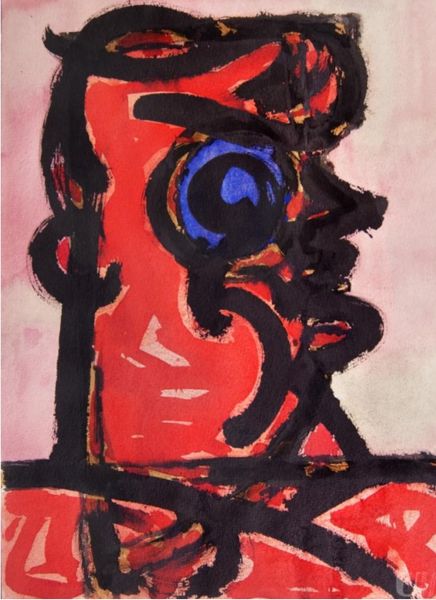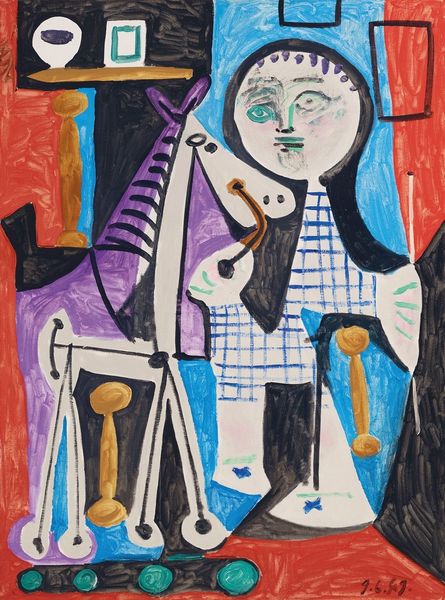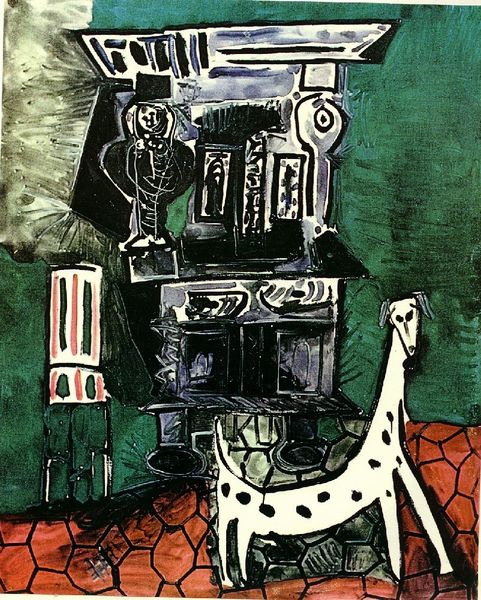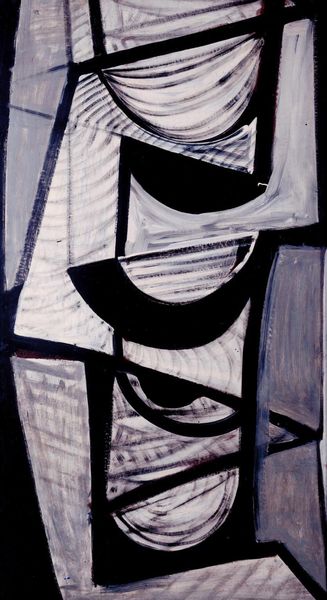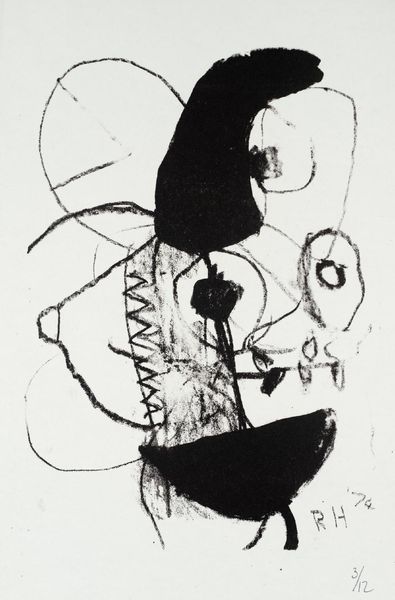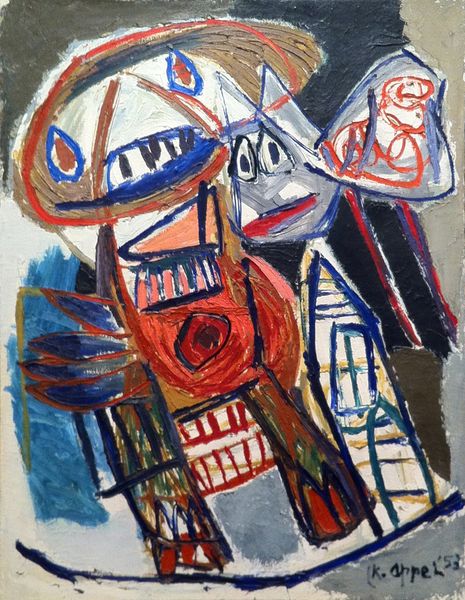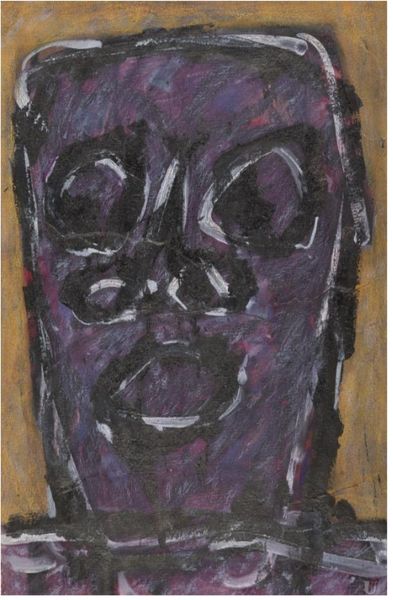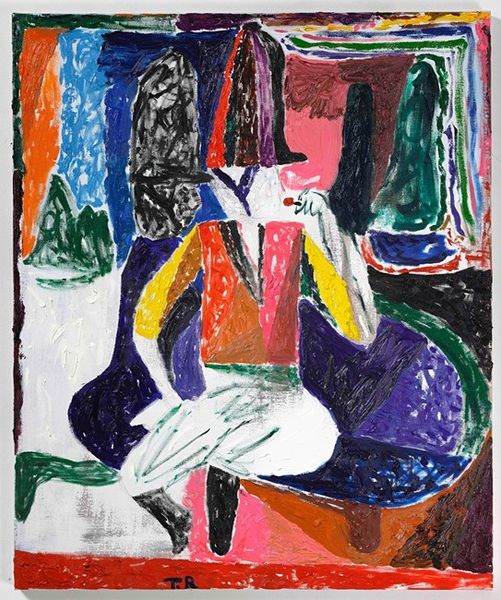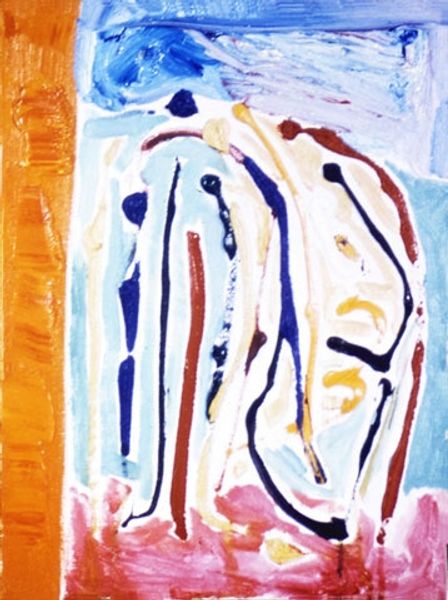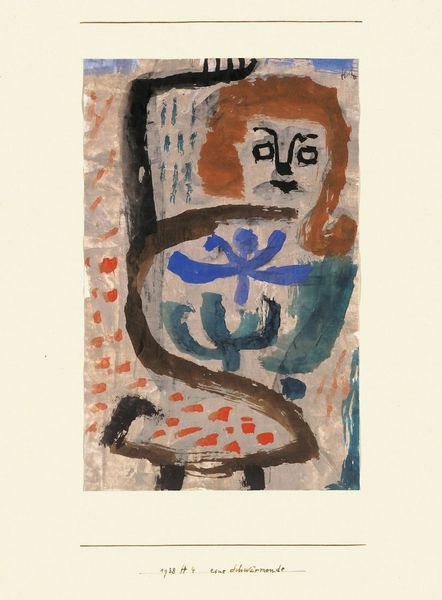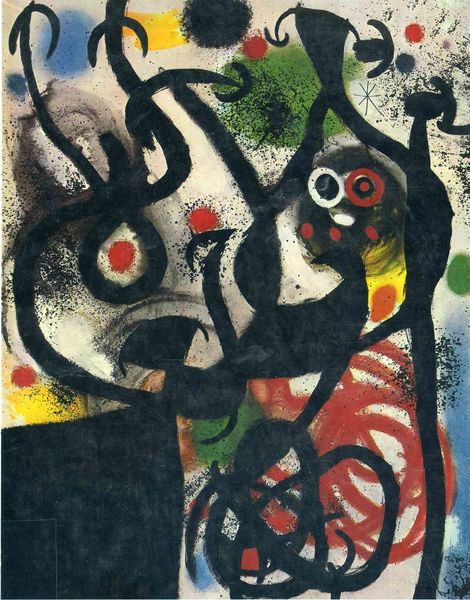
Copyright: Modern Artists: Artvee
Curator: Here we have Pablo Picasso's "Le chien dalmate," or "The Dalmatian Dog," created in 1959. It’s a striking piece. Editor: Indeed. My initial reaction is one of playful unease. The color palette is restricted, almost somber, yet the subject, a Dalmatian, is inherently whimsical. There’s a tension created by that juxtaposition. Curator: Let's consider Picasso's process. It is acrylic on canvas, isn't it? In the late 50's, Picasso was very productive across mediums, yet painting offered an opportunity to investigate materials at a large scale. The application feels rushed, gestural even. You can sense the immediacy. The purple hues, though, they are intriguing given the availability of synthetic pigments during that era... Editor: Precisely. The texture itself contributes to the dynamic effect. Notice the flat planes of purple interspersed with areas where the underpainting shows through? It’s not a seamless, polished surface. This conscious decision guides our understanding of the work. Do you read the monochrome of the human face looming above the pup? Curator: I see a direct reflection of the dog in the human. It looks less like "high art" and more like public art, perhaps spray painted by hand. This feels like Picasso embracing techniques used among laborers and everyday members of the working class. I find myself thinking about his relationship to craft... Editor: That is possible. Speaking more specifically to formalism, the Dalmatian itself is rendered almost as a series of shapes, deconstructed and then reassembled. It echoes his Cubist explorations, but with a newfound fluidity. Its placement, near the bottom edge, anchors the composition, but also feels precarious. Curator: Perhaps, the precarious feeling alludes to working-class precarity in 1950's France, a time that also witnessed increased domestication and regulation of labor... Editor: An interesting point! It also opens our minds to seeing things, literally, differently, and prompts new interpretations and insights. Curator: Precisely, there are still new conversations and material relations to be explored around art and life.
Comments
No comments
Be the first to comment and join the conversation on the ultimate creative platform.
